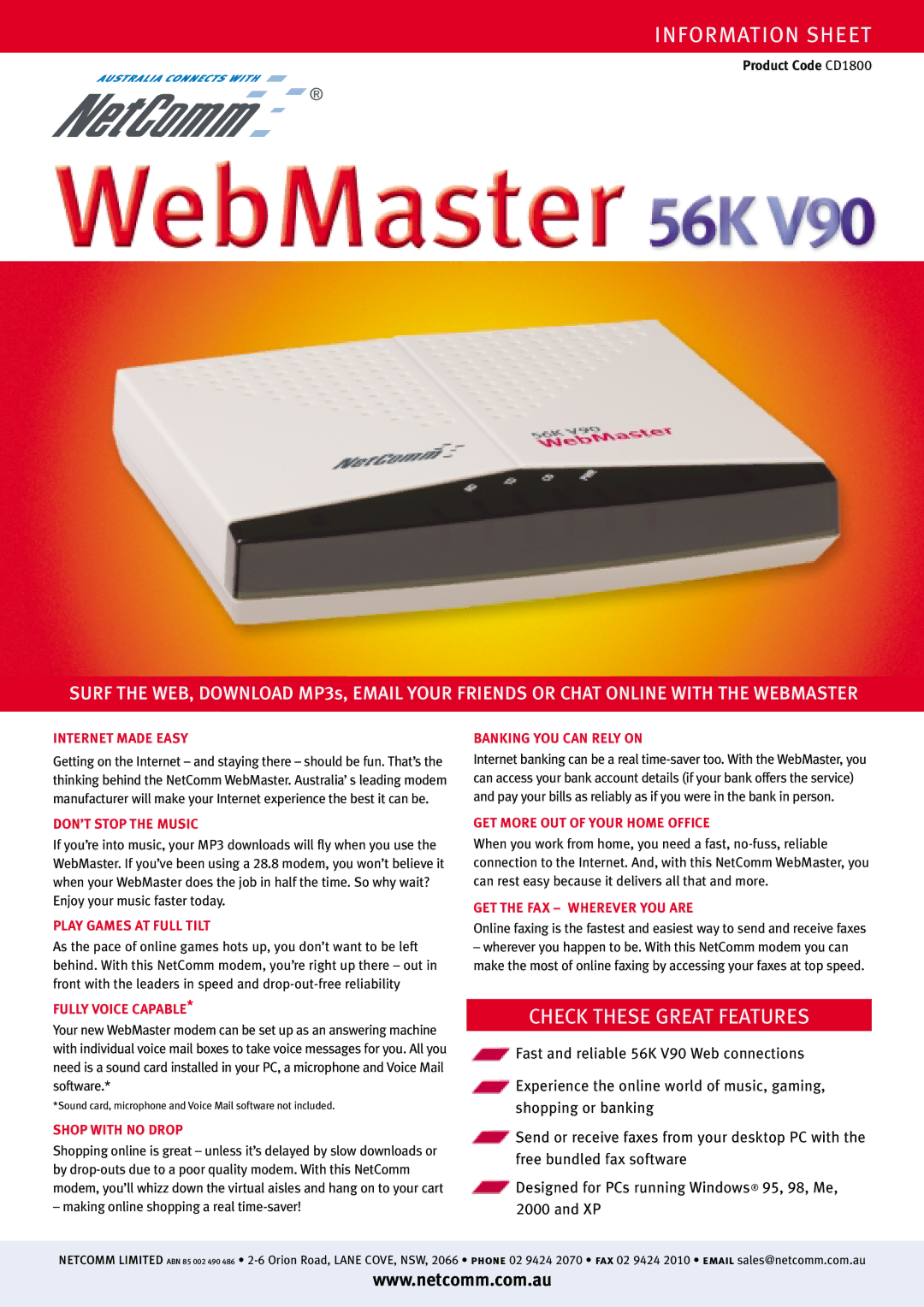56K V90 specifications
The NetComm 56K V90 modem marked a significant advancement in dial-up internet technology during the late 1990s, enabling users to achieve internet speeds of up to 56 Kbps. This transition from earlier 28.8 Kbps and 33.6 Kbps modems represented a leap forward in connectivity, meeting the growing demand for faster internet access as more households began to embrace the online world.One of the main features of the NetComm 56K V90 modem was its support for the V.90 protocol. This allowed for optimal transmission speeds over standard telephone lines, a crucial capability when traditional ISDN and DSL options were often unavailable or too expensive for average users. The V.90 standard relied on a combination of modem technologies, employing digital signal processing to optimize data transmission, which was particularly useful for users connecting over traditional analog phone lines.
The modem also included an integrated error correction mechanism, known as V.42, which contributed to a more reliable connection. This technology ensured that data was transmitted accurately, reducing the number of retransmissions needed and improving overall performance. Coupled with the Layer 2 forward error correction (FEC), the NetComm 56K V90 was adept at maintaining both speed and reliability, even in less-than-ideal phone line conditions.
In terms of physical characteristics, the NetComm 56K V90 modem typically featured a compact design that allowed it to fit easily on a desk or near a computer setup. Many models were external, connecting to a computer via a standard serial or USB port, while some were integrated into PCI cards that could be installed directly into the computer’s motherboard.
The user-friendly installation process was another notable aspect of the NetComm 56K V90 modem. Most modems came with straightforward software that guided users through the setup process, making it accessible even for those with limited technical knowledge.
Despite advancements in broadband technology, the NetComm 56K V90 remains an important piece of internet history, symbolizing a time when dial-up was the primary means of accessing the web. Its legacy continues to influence modem technologies today, even as newer, faster solutions dominate the market.

